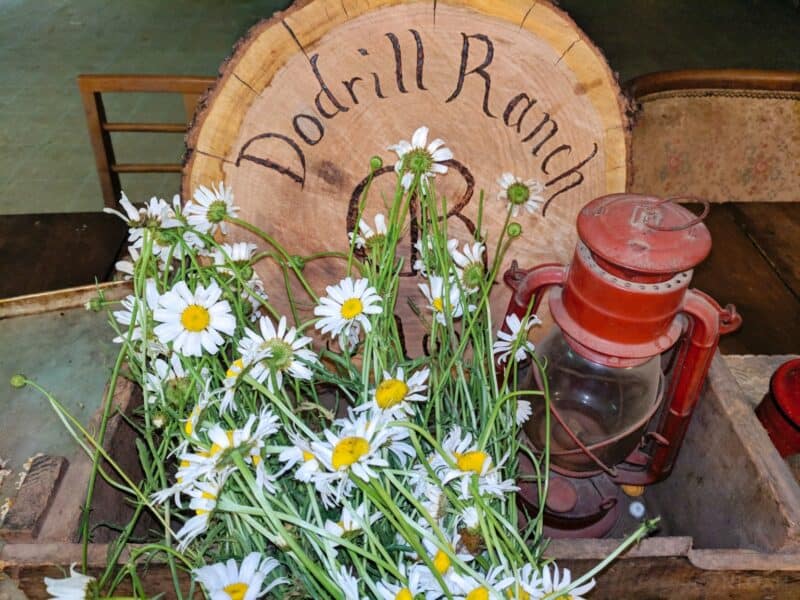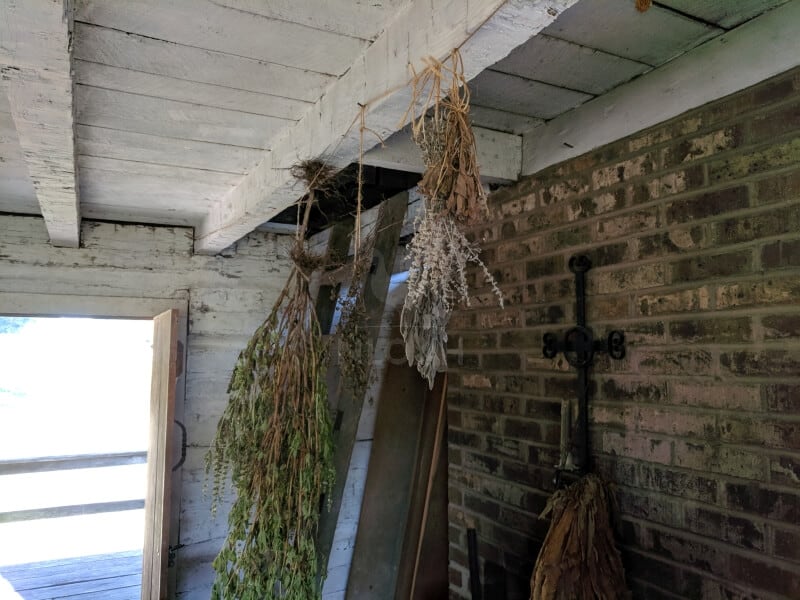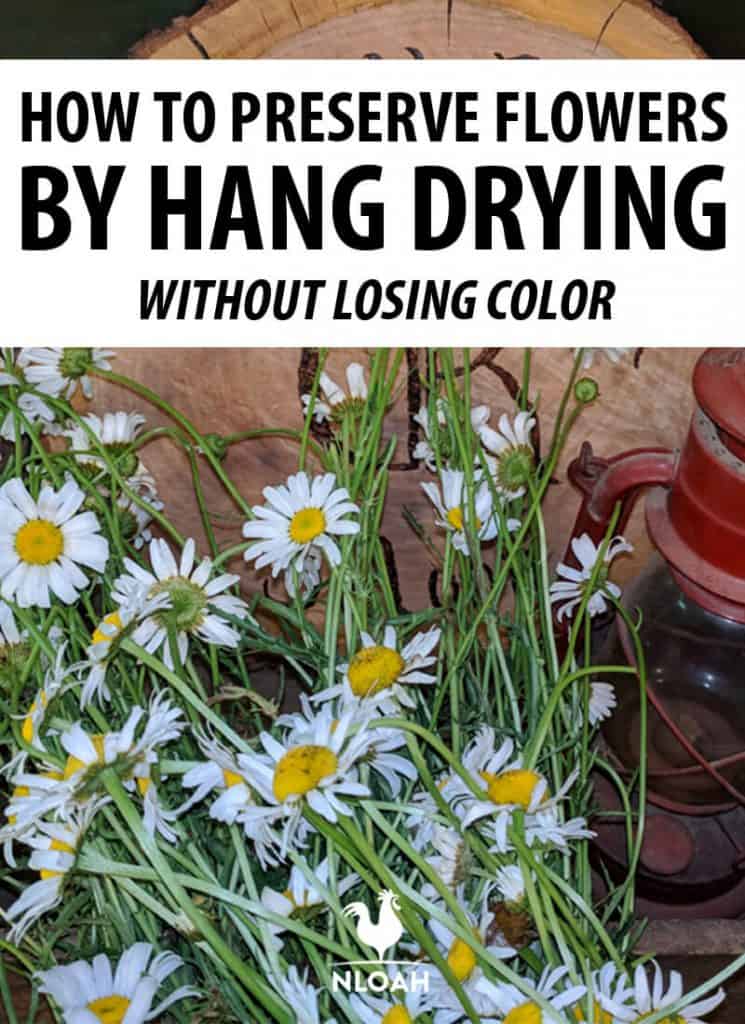Hang drying flowers by is the traditional way of preserving them to use as food, medicine, or decoration. While this method of drying flowers takes a lot longer than using an oven, it works just as effectively.

If you are an off the grid homesteader, or simply want to dry a large batch of edible or non-edible flowers at once, the hang drying method might be the best wild edible preservation method for you. You could also dry them in an oven, microwave, or dehydrator, but this method doesn’t require you have any equipment.
Flower Hang Drying Basics
The key to successful hang drying of flowers without the loss of petals or colors is finding the right spot for the process to take place.
Ideally, you need both a dry and dark area that also facilitates good air flow. Attics and some closets make great hang drying spots. Hanging flowers or vegetables to dry them in the kitchen or around the wood stove or fireplace is also an option. But, because the area will not be continually dark as well as dry with good air circulation, expect to lose color and petals in the process.
It typically takes two to three weeks to hang dry flowers.
Large or dense flowers like roses, tulips, peonies, or chrysanthemums will take longer to air dry, and could actually wilt or mold during the hang drying process. These types of flowers will generally preserve better if dried in the oven or microwave.
When the flowers are finished blooming and fully mature, they can lose some of their petals during the hang drying process. For best results, harvest the flowers before in full bloom.
Herbs, plant leaves, and very small or delicate flowers, like some varieties of lilies, are better preserved using the pressing technique.

How to Hang Dry Flowers
- Remove any excess foliage from the stalk of flowers by snipping with a pair of scissors.
- Trim the stems if necessary to fit your drying location, but do not cut them shorter than six inches.
- Flowers can be hung individually or in bouquet-style bunches. Just make sure you do not group so many flowers together that a reduction in air flow occurs. A grouping of 10 flowers wrapped together in a single hanging set is recommended.
- Wrap the stem ends about two fingers’ width from the bottom with rubber bands about three times. The flower stems will also shrink during the hang drying process. Wrapping a rubber band around the ends of the stems before tying or wiring on the hanger will help keep the bunch together far more securely. Any flower that falls to the ground will wilt due to a lack of adequate air flow on all sides. Try not to attach the rubber band so tightly that it creases the stem; doing so could cause it to crack, and allow the entire grouping of flowers to fall to the ground. If using a rubber band causes too much concern, simply use some twine or floral tape instead.
- To secure the flowers together, use twine, baling wire, unflavored dental floss, or 20 to 24 gauge craft wire.
- Wrap the chosen wire or string around the bottom of the stems securely so none of the harvested flowers, herbs, or grouping of leaves become loose during the hang drying process.
- Secure the open end of the wire or string to a tea cup hook, screw or nail head, or rafter in your chosen hang drying location.
- Resist the urge to frequently check on the flowers during the two to three week hang drying. The more the flowers are exposed to light, the longer the drying process will take, and the greater the chance of losing color vibrancy.
Changes to Expect When Hang Drying Flowers
- The flowers will continue to open just a slight bit during the hang drying process.
- Expect some petal loss during this type of preservation process. But, there is typically less wrinkling of the flower petals when preserving them in this manner – especially if you attempt to hang thick or large flowers.
- No matter how careful you are when choosing a hang drying location or when harvesting the flowers, there will almost always be some wilting and/or pest damage before the process is completed.
- The flower stems typically dry straight and stiff. If you want to make the stems more pliable for a crafting project, submerge only the stem in Lukewarm to warm water for several minutes to soften it and then bend in into the desired position. You can use hard object or wire to make the stems retain the position until it dries and should naturally hold the new shape.
You will be able to determine that the flower hang drying process is complete when the bunches both look and feel crispy to the touch. Sometimes, but not often, it can take up to four weeks for flowers to fully dry.
To have a better chance and retaining the vibrant hues of the flowers, quickly get them prepared for hang drying and into the chosen preservation location immediately after picking. Do not allow the flowers to linger in the sunlight.


Tara lives on a 56 acres farm in the Appalachian Mountains, where she faces homesteading and farming challenges every single day, raising chickens, goats, horses, and tons of vegetables. She’s an expert in all sorts of homesteading skills such as hide tanning, doll making, tree tapping, and many more.
